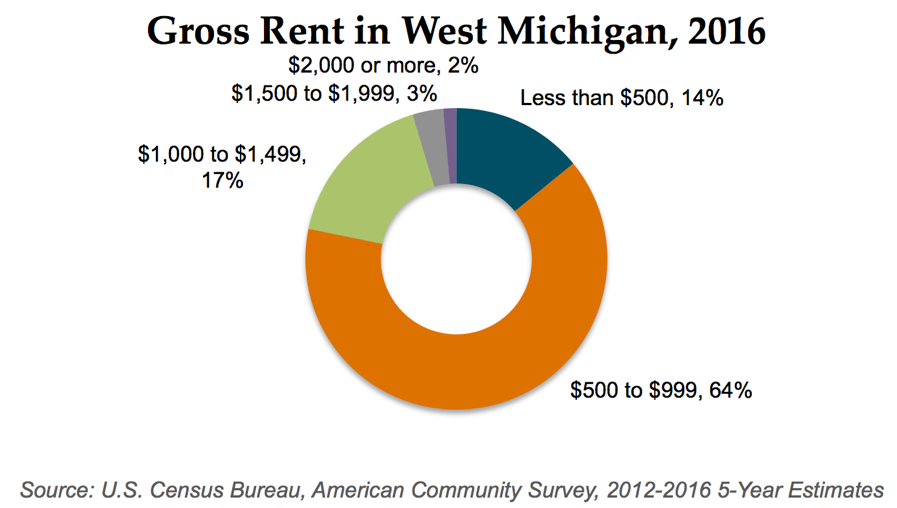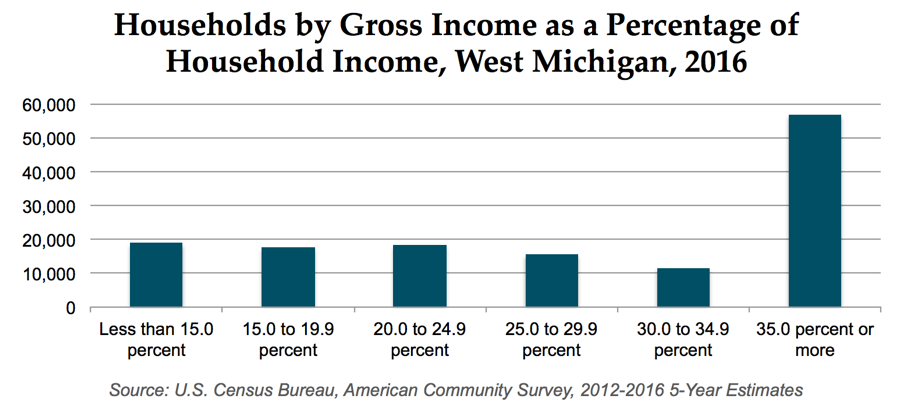In a previous edition of Data Points, we looked at what data is available around housing in the American Community Survey (ACS), an annual survey conducted by the U.S. Census Bureau. In it, we found a lot of information around the age of housing stock, types of units available, and homeownership. Today, we turn to the rental market.
Renting in West Michigan
In West Michigan, there are nearly 577,000 occupied units, or about 14.9 percent of total occupied units in the state. Of these, nearly 150,000 units are renter-occupied (as opposed to owner-occupied). This translates to 25.9 percent of all occupied units.
Compared to the state of Michigan, the proportion of units that are renter-occupied is slightly lower; on a statewide basis, 29.2 percent of all occupied units are occupied by renters.
Affordability
When it comes to renting, many studies and headlines revolve around the issue of affordability. How affordable housing is within an area can largely dictate how affordable an area is overall, and is the result of many market forces.
In West Michigan, 78.2 percent of all renters are paying less than $1,000 per month in rent. This proportion is higher than in Michigan overall, where 72.1 percent of renters pay this same amount. On the higher end, just 4.7 percent of West Michigan renters pay over $1,500 per month in rent, which is lower than the 6.5 percent seen for this level of rent seen in Michigan.

The U.S. Census Bureau as part of the ACS calculates a metric around affordability, which is the gross rent as a percentage of household income (called GRAPI). This metric can’t be calculated for all renter-occupied units, but is a very helpful statistic to measure affordability.

In our region, just over half of renters are spending less than 30 percent of their household income on rent. However, an astounding 41.0 percent of West Michigan renters spend over 35 percent (greater than a third of their income) on their monthly rent. With this much of household income going towards housing every month, it becomes harder for these West Michigan residents to supply food, transportation, and other essential needs to themselves and their families.
More about the data
These data are derived from American Fact Finder Table DP04, Selected Housing Characteristics. Want to learn more or analyze the data yourself? Check it out at American Fact Finder.
Future Data Topics
Have you been enjoying these “Data Points” blogs? Are you interested in other data? Let us know what topics you’d like to know more about on our Twitter @WMTalent2025! We’d like to crunch some numbers that you’re interested in.


